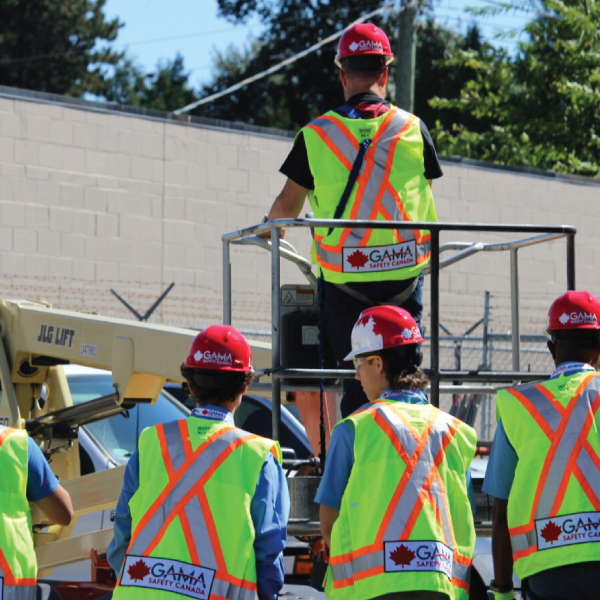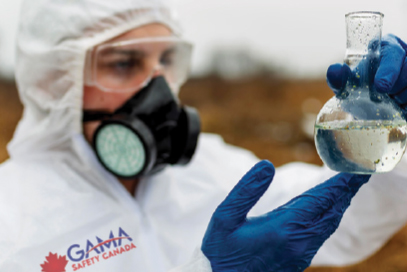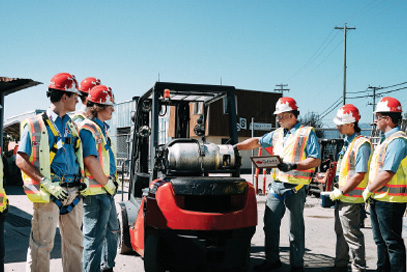Safety Guidelines for Operating
Aerial Lift in Elevated Work Areas.
Aerial Lift provide workers with elevated access for tasks such as maintenance, repairs, or inspections. Safe operation involves understanding platform controls, checking for hazards, securing tools and materials, and wearing fall protection equipment to prevent accidents when working at height.
Safety Guidelines for Operating
Aerial Lift in Elevated Work Areas.
Aerial Lift provide workers with elevated access for tasks such as maintenance, repairs, or inspections. Safe operation involves understanding platform controls, checking for hazards, securing tools and materials, and wearing fall protection equipment to prevent accidents when working at height.
OUR PARTNERS AROUND THE WORLD
OUR PARTNERS AROUND THE WORLD
OUR PARTNERS AROUND THE WORLD
OUR PARTNERS AROUND THE WORLD
OUR PARTNERS AROUND THE WORLD
OUR PARTNERS AROUND THE WORLD
OUR PARTNERS AROUND THE WORLD
OUR PARTNERS AROUND THE WORLD
OUR PARTNERS AROUND THE WORLD
OUR PARTNERS AROUND THE WORLD
OUR PARTNERS AROUND THE WORLD
OUR PARTNERS AROUND THE WORLD
OUR PARTNERS AROUND THE WORLD
OUR PARTNERS AROUND THE WORLD
OUR PARTNERS AROUND THE WORLD
OUR PARTNERS AROUND THE WORLD
OUR PARTNERS AROUND THE WORLD
OUR PARTNERS AROUND THE WORLD
OUR PARTNERS AROUND THE WORLD
OUR PARTNERS AROUND THE WORLD
OUR PARTNERS AROUND THE WORLD
OUR PARTNERS AROUND THE WORLD
OUR PARTNERS AROUND THE WORLD
OUR PARTNERS AROUND THE WORLD
OUR PARTNERS AROUND THE WORLD
OUR PARTNERS AROUND THE WORLD
OUR PARTNERS AROUND THE WORLD
OUR PARTNERS AROUND THE WORLD
OUR PARTNERS AROUND THE WORLD
Aerial Lift
Pre-Use Checks
Review critical pre-operation inspections including hydraulics, tires, safety systems, and fall protection equipment.
Safe
Lift Operation
Learn how to elevate safely, use harnesses correctly, and manage surroundings when operating aerial lift platforms.
Aerial Lift Safety Resources
Guidelines for safe operation of bucket truck aerial lifts, including hazards and precautions.
Safety information on aerial lift elevating platforms, including design and safe use practices.
Safe work practices for aerial lift use, including inspections, setup, and fall protection.
Hazards and safety measures for suspended aerial lift platforms used in construction and maintenance.
WorkSafeBC guidance on aerial lift equipment requirements and safe use practices.
Clarification of aerial lift safety rules, including inspection and worker protection requirements.
Aerial Lift Essentials:
Staying Safe While Operating Aerial Work Platforms
Operating Aerial Lifts requires focus, awareness, and strict adherence to safety protocols. Always inspect the equipment before use, wear required fall protection, and never exceed weight limits. Ensure the lift is on stable, level ground and be mindful of overhead hazards like power lines and structures. Only trained and authorized personnel should operate aerial lifts.
Remember: safety at height starts with preparation on the ground.

AERIAL LIFT
Aerial Lift Essentials:
Safe Operation of Aerial Lifts
Safe use of Aerial Lift is essential to prevent falls, collisions, and other workplace accidents. Before operating any type of aerial lift such as a scissor lift, boom lift, or vertical mast lift a thorough pre-use inspection must be completed. This includes checking hydraulic systems, controls, guardrails, tires, and emergency functions. Only trained and authorized personnel should operate these machines, always following the manufacturer’s guidelines and wearing proper personal protective equipment (PPE), such as a harness and lanyard when required.
During operation, workers should maintain a stable position within the platform, never climbing on guardrails or using objects to gain extra height. It is crucial to stay within the lift’s weight capacity and avoid sudden movements that could cause instability. The work area should be clear of overhead hazards like power lines and have level, stable ground. At the end of the shift, the platform must be fully lowered, powered off, and parked in a safe location. Following these basic safety practices greatly contributes to a safer work environment for everyone.
AERIAL LIFT Definition
An aerial lift is a type of mobile elevated work platform (MEWP) used to temporarily lift workers and their tools to elevated work areas. These machines are commonly used in construction, building maintenance, window cleaning, warehousing, utility work, and other tasks that require access to high, hard-to-reach places. Aerial lifts include various models such as boom lifts, scissor lifts, and vertical mast lifts, each designed to provide safe and stable elevation.
Unlike ladders or scaffolding, aerial lifts offer a more flexible, mobile, and secure method for working at heights. Most models come equipped with guardrails, fall protection anchorage points, and stable platforms that reduce the risk of falls. These lifts are powered by electric, diesel, or hybrid systems and can be operated on a variety of terrains depending on the model and tire type.
The defining characteristic of an aerial lift is its ability to raise workers vertically and, in some cases, extend them horizontally to access difficult areas. However, their safe use depends on trained operation, regular inspection, and compliance with site-specific safety standards. Due to the inherent risk of working at height, aerial lifts are regulated by provincial and federal safety authorities across Canada.
Aerial lifts come in different types, each with specific design features and intended applications. The most common types are boom lifts, scissor lifts, and vertical mast lifts. Boom lifts include articulating and telescoping versions ical elevation.
Vertical mast lifts are compact and best suited for indoor work with limited space, such as replacing light fixtures or accessing warehouse shelves. There are also trailer-mounted lifts and truck-mounted lifts, which offer mobility for roadside or outdoor applications. Choosing the right type of aerial lift depends on factors like the height of the work area, available ground space, indoor or outdoor use, and surface conditions.
Each lift type comes with its own operation procedures and safety considerations. For example, boom lifts require special awareness of tip-over risks and fall protection equipment, while scissor lifts require attention to overhead clearances and platform stability. Training should be specific to the lift type in use, ensuring that operators understand the mechanical and safety characteristics of the equipment.
Aerial lifts consist of several essential components that work together to provide vertical or angled access while ensuring operator safety. These typically include the base (or chassis), which supports the entire lift and may feature wheels or tracks; the lift mechanism, which varies depending on the model (e.g., hydraulic arms for boom lifts or scissor arms for vertical movement); and the platform or basket, where the worker stands. Platforms include guardrails, control panels, and in many cases, harness anchor points for fall protection.
The power source electric, diesel, gas, or hybrid powers the lift and drive systems. Control systems are usually located at both the base and the platform, allowing operation from the ground or while elevated. Other critical components include outriggers or stabilizers (used in some models to provide extra support), emergency lowering systems, and tilt sensors that detect unsafe conditions.
Familiarity with these components is crucial for operators, as each part has its own maintenance needs and operational functions. Pre-use inspections require checking hydraulic lines, tire condition, control functionality, and fall protection systems to ensure everything is in working order. A single malfunctioning component can lead to serious consequences when working at height.
Aerial lift training is essential because working at height poses serious risks, including falls, tip-overs, electrical contact, and equipment malfunction. Training ensures that operators understand how to safely operate the lift, recognize hazards, conduct equipment inspections, and use personal protective equipment (PPE) effectively. A trained worker is significantly less likely to experience an incident, and trained operators contribute to a safer overall worksite.
Comprehensive aerial lift training includes both classroom instruction and hands-on practice. It covers topics such as machine controls, stability principles, fall protection procedures, safe driving practices, hazard recognition, emergency descent, and regulatory compliance. Practical evaluation is crucial for ensuring that an operator can apply their knowledge in real work conditions.
In Canada, training is not optional it is mandated under provincial and federal workplace safety legislation. Workers must receive formal instruction, pass an evaluation, and be certified before they are allowed to operate an aerial lift. Employers must provide this training and ensure it is up to date, especially when equipment changes or when unsafe behavior is observed.
Several significant hazards are associated with aerial lift use, and failing to address them can result in serious injury or death. Fall hazards are the most prominent; even though aerial lifts come with guardrails, operators are still required to wear a harness and connect to an approved anchor point in certain models like boom lifts. Tip-over hazards can occur if the lift is operated on uneven ground, in high winds, or with the platform overloaded.
Another major hazard is electrocution, especially when working near overhead power lines. Aerial lifts must maintain safe distances from electrical sources, and operators must be aware of their surroundings at all times. Crushing hazards can also arise when a worker is pinned between the lift and a fixed structure or when the lift moves unexpectedly in a confined space.
Prevention of these hazards depends on proper training, adherence to safe operating procedures, and routine equipment inspections. Employers must ensure that worksites are prepared for aerial lift use, including assessing ground conditions, overhead clearance, and environmental factors. Workers must be trained to recognize these hazards and take proactive steps to avoid them.
Aerial lifts greatly enhance both productivity and safety in elevated work environments. From a productivity standpoint, these machines allow workers to access hard-to-reach areas quickly and safely, reducing the need for time-consuming scaffolding setups or risky ladder use. They are mobile, efficient, and often designed to navigate tight indoor spaces or uneven outdoor terrain, making them adaptable to various jobsite conditions.
In terms of safety, aerial lifts offer numerous built-in features such as guardrails, tilt alarms, emergency descent systems, and harness anchorage points. These features help reduce the risk of falls and accidents, which are among the leading causes of injury in construction and industrial settings. Additionally, aerial lifts reduce the amount of physical strain on workers, allowing them to focus on the task at hand without the risk of overexertion or awkward positioning.
When combined with proper training and maintenance, aerial lifts become a reliable tool that not only improves efficiency but also plays a critical role in creating safer job sites. Their use contributes to reduced accident rates, improved worker morale, and better project outcomes. Employers that invest in aerial lift safety programs also benefit from reduced liability and improved compliance with workplace safety standards.
AERIAL LIFT Legislation
Yes, aerial lift training is required by law in every province and territory across Canada. Under both federal and provincial occupational health and safety legislation, employers must ensure that workers are properly trained and competent before operating an aerial lift. This requirement applies to all forms of mobile elevated work platforms (MEWPs), including scissor lifts, boom lifts, and vertical mast lifts.
Regulatory bodies such as WorkSafeBC, Ontario’s Ministry of Labour, and Alberta OHS mandate that operators must be educated on the specific equipment they will use, including its limitations, hazards, and operational procedures. Training programs must cover both theoretical instruction and practical evaluation. In many jurisdictions, the CSA Standard B354 (Canadian Standards Association) is followed, which outlines the minimum requirements for safe MEWP use, training, and maintenance.
Failure to comply with these training requirements can result in legal penalties, worksite shutdowns, or serious accidents. Employers are also obligated to maintain training records and ensure operators undergo retraining or recertification at recommended intervals, especially when there are changes to equipment or procedures. Meeting this requirement isn’t just about compliance it’s essential for worker safety.
Aerial lift operations in Canada are governed by a combination of provincial occupational health and safety regulations and CSA standards. Each province has its own legislation, but most jurisdictions reference the CSA B354 series (now harmonized with international standards as CSA B354.6-17), which sets out detailed guidelines for the design, operation, maintenance, and training of mobile elevating work platforms (MEWPs). These standards cover everything from safe use procedures to fall protection requirements.
For example, in British Columbia, WorkSafeBC Regulation 13.2.1 requires aerial lift operators to be trained and evaluated on the equipment they use. In Ontario, Regulation 213/91 under the Occupational Health and Safety Act specifies fall protection and training obligations for workers operating on MEWPs. Federally regulated industries must comply with Part II of the Canada Labour Code, which emphasizes hazard prevention and proper instruction for hazardous equipment.
These laws and standards work together to provide a consistent framework across the country. While there may be minor differences in how provinces enforce or interpret the rules, the fundamental expectation is that employers provide a safe system of work, and operators demonstrate competency with the equipment. Staying current with regulatory changes and CSA updates is essential for maintaining compliance.
Employers have a legal duty to ensure that any aerial lift used in the workplace is operated safely and by qualified personnel. This includes conducting a hazard assessment before each job, providing proper training and supervision, ensuring equipment is in safe working order, and enforcing the use of fall protection where required. These duties are mandated under occupational health and safety legislation in every province.
In addition to training, employers must develop written procedures for safe lift operation, ensure that personal protective equipment (PPE) such as harnesses and lanyards are provided, and that they meet CSA-approved standards. Employers are also responsible for maintaining up-to-date maintenance logs, ensuring that the lift is inspected daily before use, and arranging for annual inspections by qualified personnel as required by law.
Neglecting these responsibilities can lead to fines, lawsuits, and criminal liability in the event of an accident. More importantly, proactive employer involvement in aerial lift safety reduces workplace incidents and fosters a culture of safety. By following legal obligations and prioritizing safety, employers can protect both their workers and their organization’s reputation.
Yes, fall protection systems are legally required when operating certain types of aerial lifts in Canada. According to CSA B354.6 and most provincial OHS regulations, boom lifts and articulating lifts require the use of fall protection typically a full-body harness connected to an approved anchor point within the lift platform. In contrast, scissor lifts may not require harnesses if guardrails are present and properly maintained, although some jurisdictions still recommend them as best practice.
Fall protection requirements are detailed in provincial regulations such as Ontario Regulation 213/91, which mandates that any worker exposed to a fall greater than 3 metres must use a fall protection system. In British Columbia, WorkSafeBC mandates the use of personal fall protection on boom-type lifts regardless of platform height. These rules are enforced through inspections, fines, and potential stop-work orders for non-compliance.
The rationale behind these laws is simple: falls are one of the leading causes of serious injury and death in the workplace. Fall protection systems reduce the likelihood of a worker being ejected or falling from the lift in the event of sudden movement, tip-over, or collision. Employers must not only supply the equipment but also ensure that operators are trained in its correct use and inspection.
While the exact frequency of aerial lift recertification is not specified in all provincial regulations, most jurisdictions and safety standards recommend retraining every three years, or more frequently if an incident occurs, if the operator exhibits unsafe behavior, or when new equipment is introduced. This recommendation aligns with CSA B354.8, which outlines guidelines for ongoing operator competency and refresher training.
Recertification ensures that operators stay up to date with the latest safety protocols, equipment changes, and regulatory developments. It typically includes a review of theoretical knowledge, practical skill evaluation, and verification that the operator can still meet the competency requirements outlined by the employer and regulatory bodies. Documentation of all refresher training must be kept on file by the employer.
Employers are encouraged to create internal systems that track when operator certifications are due to expire. Keeping certifications current not only fulfills legal obligations but also ensures operational consistency and reduces liability. A well-maintained training program shows due diligence and helps prevent costly and dangerous mistakes on site.
Non-compliance with aerial lift regulations can result in severe legal and financial consequences. Provincial safety regulators such as WorkSafeBC, Alberta OHS, or Ontario's Ministry of Labour have the authority to inspect work sites, issue orders, levy fines, and prosecute violations. Depending on the severity of the offense, penalties can range from administrative fines to criminal charges, especially if non-compliance leads to injury or death.
In cases where negligence is proven such as allowing untrained operators to use equipment or failing to implement fall protection employers may face fines exceeding tens of thousands of dollars. Additionally, under Bill C-45 (Westray Law), which amended the Criminal Code of Canada, corporate directors and managers can be held criminally responsible for workplace deaths caused by willful negligence or failure to provide a safe environment.
Beyond legal penalties, non-compliance can also lead to higher insurance premiums, increased workers' compensation claims, damaged reputation, and loss of business contracts. For these reasons, organizations must treat aerial lift compliance not just as a legal requirement, but as a strategic priority to safeguard workers, maintain operations, and avoid preventable tragedies.
Other Courses You May Be Interested In.
Workers who complete AERIAL LIFT training often continue their safety education with the following programs:"
More Courses
Online Courses
"Explore & Book Online Courses!
Have a Question?
"We’re here to help! Click the button to get in touch."


